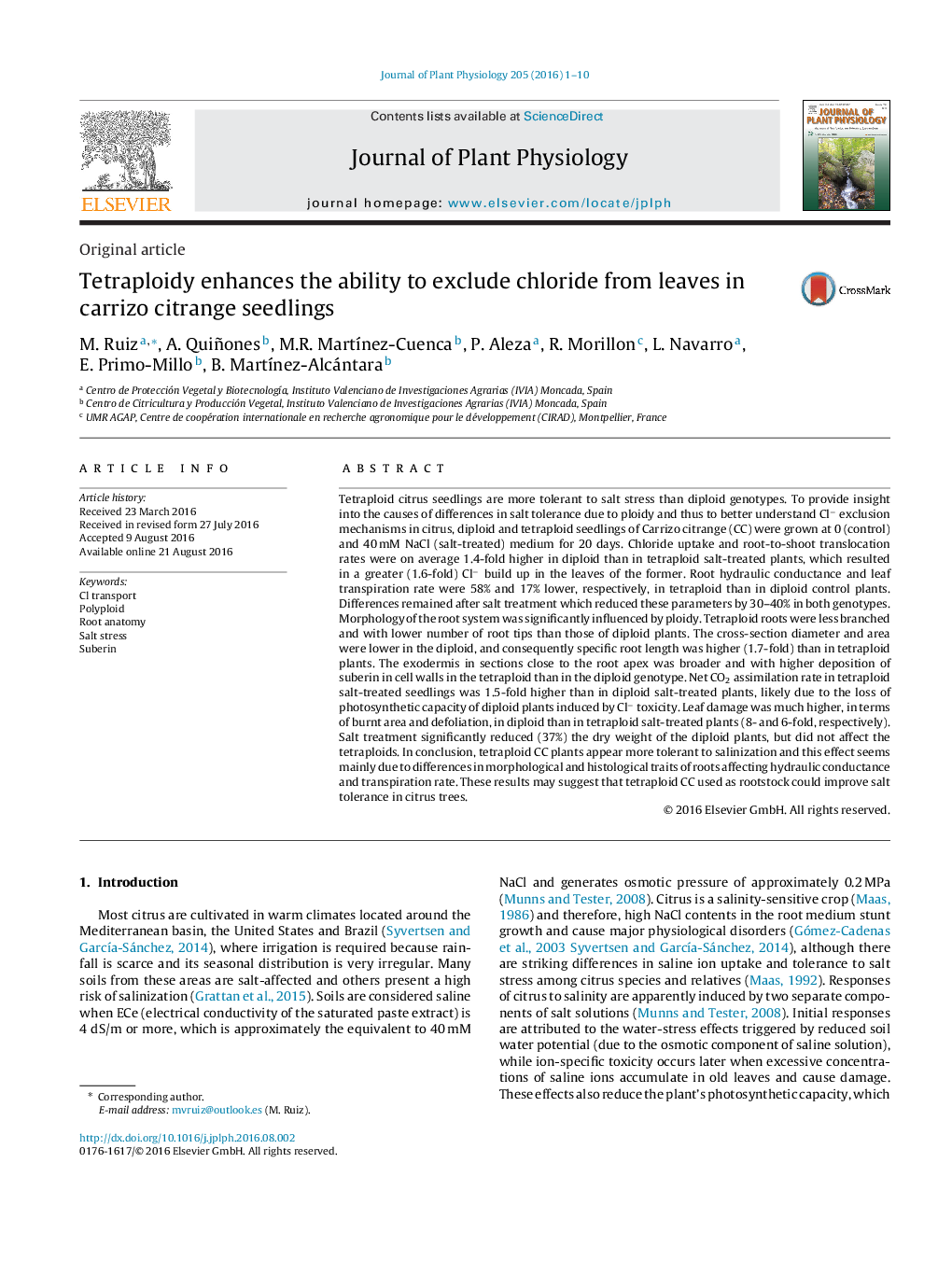| کد مقاله | کد نشریه | سال انتشار | مقاله انگلیسی | نسخه تمام متن |
|---|---|---|---|---|
| 2055359 | 1543873 | 2016 | 10 صفحه PDF | دانلود رایگان |
Tetraploid citrus seedlings are more tolerant to salt stress than diploid genotypes. To provide insight into the causes of differences in salt tolerance due to ploidy and thus to better understand Cl− exclusion mechanisms in citrus, diploid and tetraploid seedlings of Carrizo citrange (CC) were grown at 0 (control) and 40 mM NaCl (salt-treated) medium for 20 days. Chloride uptake and root-to-shoot translocation rates were on average 1.4-fold higher in diploid than in tetraploid salt-treated plants, which resulted in a greater (1.6-fold) Cl− build up in the leaves of the former. Root hydraulic conductance and leaf transpiration rate were 58% and 17% lower, respectively, in tetraploid than in diploid control plants. Differences remained after salt treatment which reduced these parameters by 30–40% in both genotypes. Morphology of the root system was significantly influenced by ploidy. Tetraploid roots were less branched and with lower number of root tips than those of diploid plants. The cross-section diameter and area were lower in the diploid, and consequently specific root length was higher (1.7-fold) than in tetraploid plants. The exodermis in sections close to the root apex was broader and with higher deposition of suberin in cell walls in the tetraploid than in the diploid genotype. Net CO2 assimilation rate in tetraploid salt-treated seedlings was 1.5-fold higher than in diploid salt-treated plants, likely due to the loss of photosynthetic capacity of diploid plants induced by Cl− toxicity. Leaf damage was much higher, in terms of burnt area and defoliation, in diploid than in tetraploid salt-treated plants (8- and 6-fold, respectively). Salt treatment significantly reduced (37%) the dry weight of the diploid plants, but did not affect the tetraploids. In conclusion, tetraploid CC plants appear more tolerant to salinization and this effect seems mainly due to differences in morphological and histological traits of roots affecting hydraulic conductance and transpiration rate. These results may suggest that tetraploid CC used as rootstock could improve salt tolerance in citrus trees.
Journal: Journal of Plant Physiology - Volume 205, 20 October 2016, Pages 1–10
